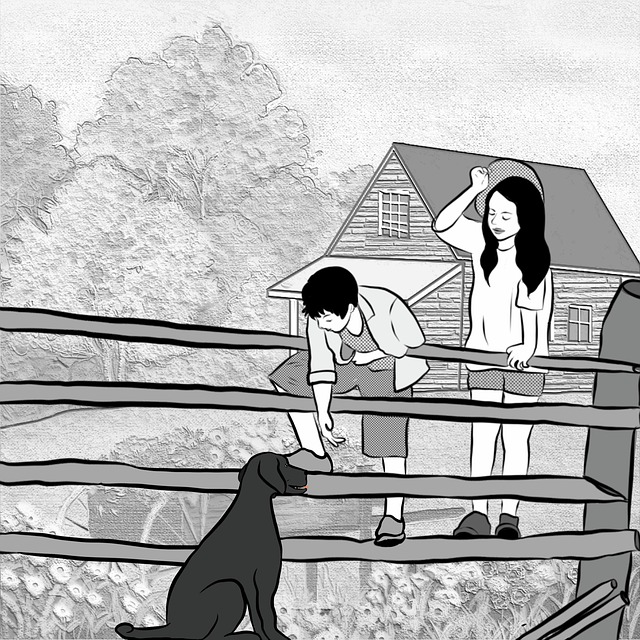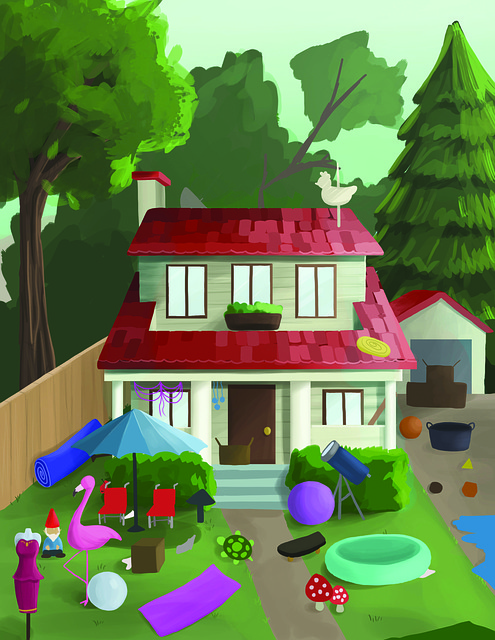An air-conditioned dog house is a modern solution for keeping canine companions safe, comfortable, and healthy in warmer climates. Key benefits include temperature control, energy efficiency, ergonomic design, and improved air quality. Regular cleaning, maintenance, and gradual adaptation are crucial for maintaining this sanctuary as a haven for pets transitioning between indoor and outdoor environments.
Understanding the Needs of Your Pet: A Basis for Safe Spaces

Every pet owner knows that their furry friend has unique needs, and creating a safe space involves understanding these requirements, especially when it comes to indoor and outdoor environments. For canine companions, providing an air-conditioned dog house can be a game-changer, particularly in regions with warmer climates. This simple solution offers relief from the heat, ensuring your dog stays cool and comfortable during playtime or rest.
Knowing that dogs are sensitive to temperature extremes, creating a safe haven becomes essential. An air-conditioned retreat provides a much-needed sanctuary, allowing pets to engage in outdoor activities without the risk of overheating. This is especially crucial when engaging in energetic pursuits like chasing balls or exploring new scents, all while keeping your dog’s well-being at the forefront.
Designing an Air-Conditioned Dog House: Key Features

Outdoor Safety Considerations: Protecting Your Dog from the Elements

Outdoor safety is an essential aspect of responsible pet ownership, especially for dogs that enjoy exploring their surroundings. When considering safe indoor/outdoor use, it’s crucial to protect your canine companion from extreme weather conditions and environmental hazards. For dogs that spend time outdoors, providing a comfortable and secure space like an air-conditioned dog house can be a game-changer. This is particularly beneficial during hot summer days when temperatures rise significantly, ensuring your dog stays cool and safe from heatstroke.
Additionally, air-conditioned spaces offer protection against cold winters, preventing hypothermia and providing a cozy retreat for your pet. By offering this indoor/outdoor flexibility, you enable your dog to enjoy the great outdoors while minimizing potential risks associated with varying weather conditions, thus fostering a healthier and happier lifestyle for your furry friend.
Indoor Comfort and Health: Ensuring a Safe Haven

Creating an indoor space that is both comfortable and healthy for your pets is essential, especially with the rise in urban living. An air-conditioned dog house offers a perfect solution, providing a sanctuary for your furry friend where they can retreat from the elements. This is particularly beneficial during hot summer days or chilly winters, ensuring your pet stays cool or warm without the risk of temperature extremes affecting their health.
An indoor environment controlled by air conditioning allows you to maintain optimal conditions year-round. You can regulate temperature and humidity levels, removing the worry of heatstroke or hypothermia. This is especially important for breeds with specific needs or elderly pets. An air-conditioned dog house also promotes better air quality, filtering out allergens and pollutants, which is beneficial for both your pet’s and your own health.
Maintenance and Cleaning: Keeping the Safe Space Hygienic

Maintaining a clean and hygienic environment is essential for any safe indoor or outdoor space, especially when it comes to spaces designed for pets like dogs. An air-conditioned dog house offers not just comfort but also requires regular cleaning to ensure the health and well-being of its inhabitants. Regular washing and wiping down of surfaces with appropriate pet-safe disinfectants can help eliminate germs and prevent the buildup of odors, ensuring a fresh and comfortable space for your canine companion.
In addition to routine cleaning, seasonal maintenance is crucial. For outdoor spaces, this might involve hosing down and deep cleaning after major weather events or periods of heavy use. Indoor dog houses should also be regularly inspected for any signs of damage or wear and tear, addressing issues promptly to maintain a safe and secure environment. Regular grooming and sanitizing of bedding, toys, and accessories further contribute to keeping the space clean, promoting a healthy living area for your pet.
Training and Adaptation: Preparing Your Pet for Transition

Transitioning your pet between indoor and outdoor environments smoothly requires preparation, especially for those who move from colder climates to warmer regions or provide an air conditioned dog house in a previously non-air conditioned home. Start by gradually exposing your pet to new conditions; take short walks outside during cooler parts of the day, then slowly increase duration and frequency as they adapt. This process helps them acclimate without overwhelming their system.
For pets used to an air conditioned dog house, ensure a similar comfort level indoors by maintaining a cool and quiet space with access to water. Adjust feeding schedules accordingly, offering meals closer to their outdoor activities to prevent energy spikes during transition periods. Regular training sessions in both settings reinforce commands and help your pet navigate the changing environment with confidence.
